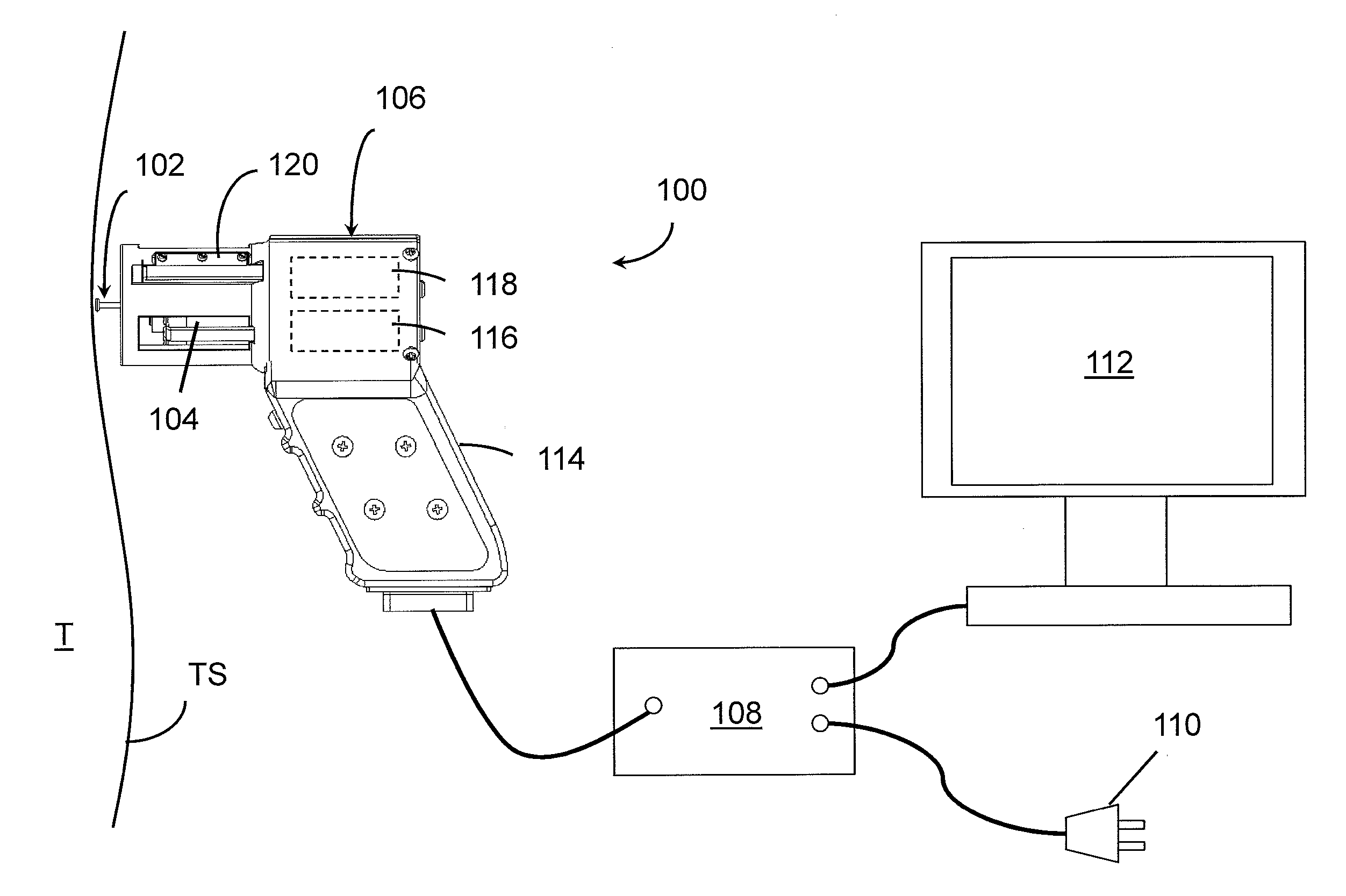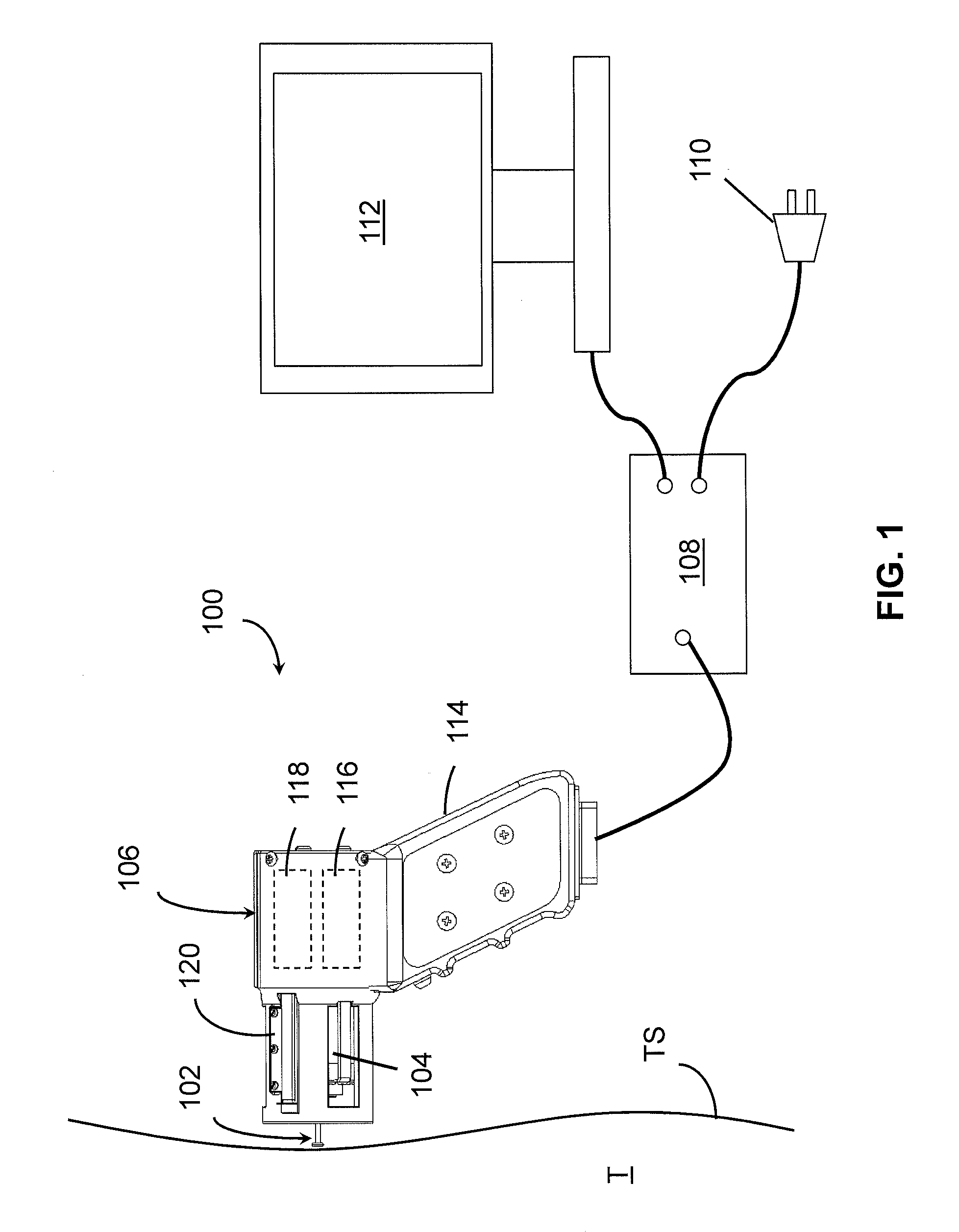Nonlinear System Identification Techniques and Devices for Discovering Dynamic and Static Tissue Properties
a dynamic and static tissue technology, applied in the field of nonlinear system identification techniques and devices for discovering dynamic and static tissue properties, can solve the problems of not fully describing the dynamic properties of skin, many systems cannot be fully described by linear dynamic models, and devices only provide information about limited aspects of skin behavior, etc., to achieve the effect of quick measurement of the mechanical properties of plant tissue and assessment of the effectiveness of skin care products
- Summary
- Abstract
- Description
- Claims
- Application Information
AI Technical Summary
Benefits of technology
Problems solved by technology
Method used
Image
Examples
example skin
Studies—Extension
[0205]Conventional extension is done in vitro but can also be conducted in vivo. With an embodiment of the invention, such as device 100, two positions on the skin were tested including the anterior proximal position and posterior proximal position 40 mm from the elbow as shown in FIG. 19A. Such tests can be performed to determine the orientation of Langer's lines, which are indicated schematically as thin lines in FIG. 19A. The initial length of the area being tested was consistent for all four configurations. The vertical and horizontal directions were tested and the localized linear results are shown in FIG. 19B, For lower forces, there does not appear to be a preferential alignment of the stiffness of skin in a particular orientation. As the forces increase however, preferential alignment or increased stiffness begins to appear in the orientation of the Langer's lines in those regions. For the anterior proximal location, the vertical orientation is stiffer than ...
PUM
 Login to View More
Login to View More Abstract
Description
Claims
Application Information
 Login to View More
Login to View More - R&D
- Intellectual Property
- Life Sciences
- Materials
- Tech Scout
- Unparalleled Data Quality
- Higher Quality Content
- 60% Fewer Hallucinations
Browse by: Latest US Patents, China's latest patents, Technical Efficacy Thesaurus, Application Domain, Technology Topic, Popular Technical Reports.
© 2025 PatSnap. All rights reserved.Legal|Privacy policy|Modern Slavery Act Transparency Statement|Sitemap|About US| Contact US: help@patsnap.com



